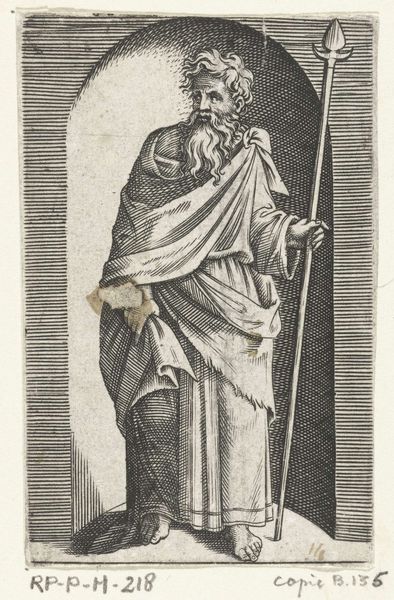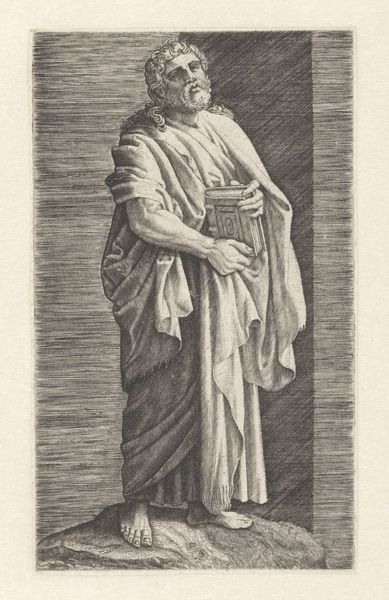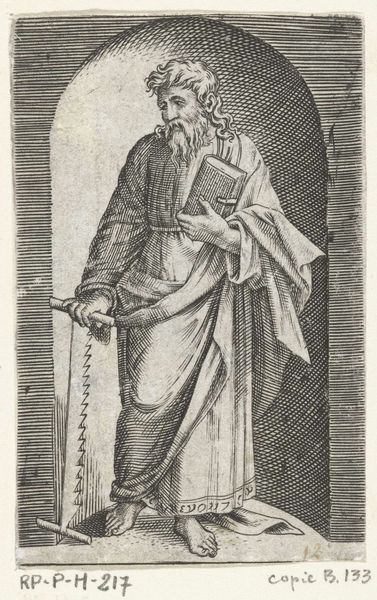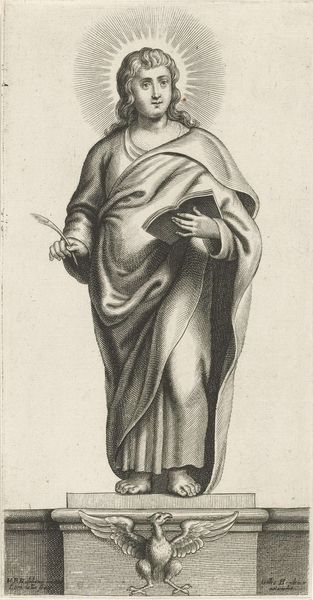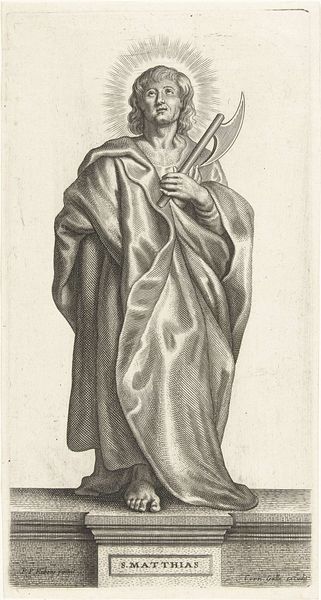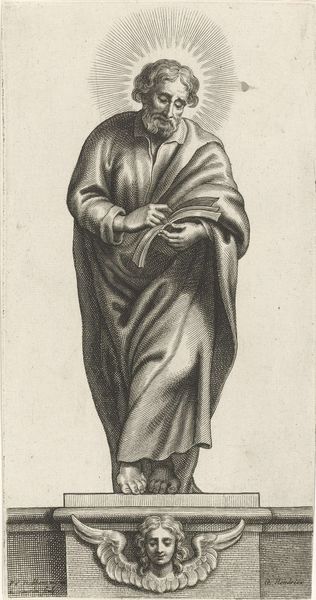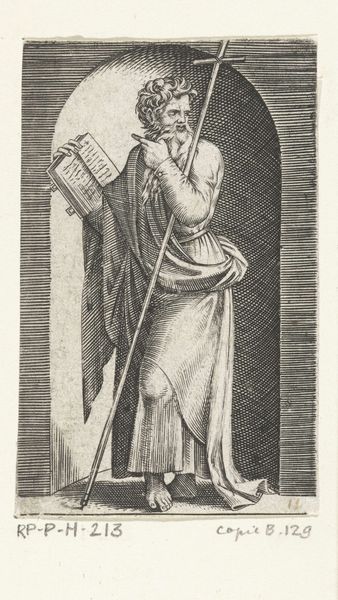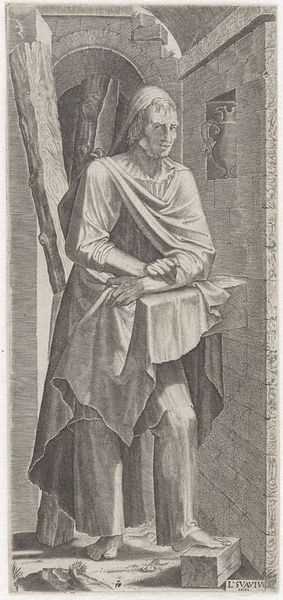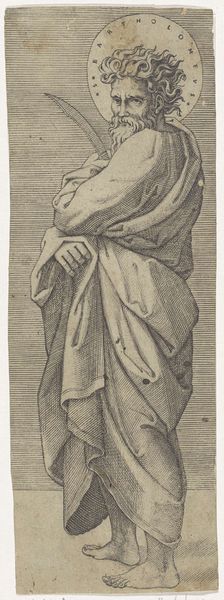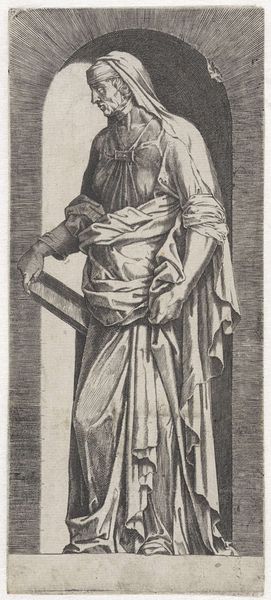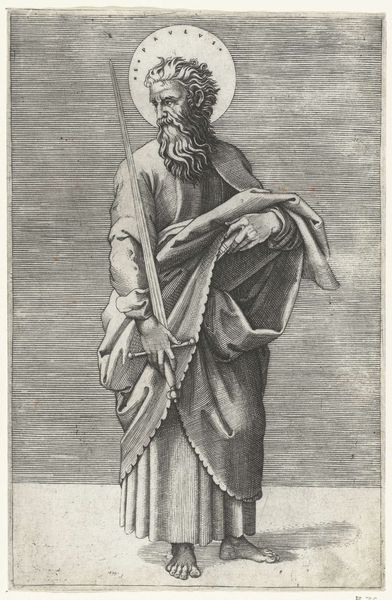
print, engraving
#
portrait
# print
#
old engraving style
#
figuration
#
11_renaissance
#
portrait reference
#
portrait drawing
#
history-painting
#
italian-renaissance
#
engraving
Dimensions: height 200 mm, width 118 mm
Copyright: Rijks Museum: Open Domain
Curator: Here we have an engraving titled "Bartolomeüs," likely created between 1555 and 1565. The artist remains anonymous, but the piece resides here with us at the Rijksmuseum. It exemplifies portraiture in printmaking during the Italian Renaissance. Editor: My first impression is this figure looks…troubled. All those delicate lines etching out worry. I wonder what was on his mind? The stark contrast adds drama; you almost feel you've caught him in a moment of deep thought. Curator: Absolutely, the use of engraving lends a sharp contrast that heightens the emotional impact. When analyzing Renaissance portraiture, it's essential to look at the social position of the depicted, the symbolism used and their relationship to power dynamics in society. Given that it is Saint Bartholomew the Apostle, how would you analyse the historical reception and meaning attributed to Bartholomew's depiction within different cultural contexts and the values they reinforce? Editor: Interesting angle! I just see a weary fellow in a robe gripping what looks like a butter knife – although I’m sure it’s more symbolic than that. The drape of the garment is magnificent. And that worried crease of his brow? Captivating! It makes me ponder my anxieties. What troubles from centuries ago mirror mine? Curator: It's an interesting consideration when looking through the prism of temporality. Furthermore, his presentation can be connected with themes of spirituality and faith in European history and religious iconography. This prompts essential discussions about historical narratives, belief systems, and cultural identity. Editor: Ah, context! Okay, I see that, definitely, adds another layer. You start thinking about the intention behind commissioning something like this. Was it devotional? A celebration of faith? Suddenly, the texture of the engraving feels richer. Curator: Precisely. Examining the material, style, and artist circles within which this print emerged enables us to challenge and broaden understandings. That leads us to more nuanced perspectives concerning historical and social processes. Editor: Well, from my corner, it's a reminder that behind every historical figure, saint, or whatever, there was a person with thoughts, fears, just trying to make sense of it all, you know? Curator: Yes. Art can definitely reveal the complicated human existence beneath grand historical narratives. I like thinking about how these artifacts promote ongoing dialogue, reshaping historical interpretation.
Comments
No comments
Be the first to comment and join the conversation on the ultimate creative platform.
